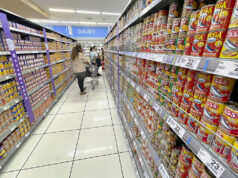New Nespresso flavors are inspired by coffee history
“PERK” can mean making something more lively, or else a small bonus. Last Tuesday, BusinessWorld experienced “perk” in every sense of the word with the launch of Nespresso’s limited edition blends: the Caffes Venezia and the Istanbul, held in the Nespresso boutique in Rockwell.
The blends take a cue from the birth of modern coffee shops: the coffeehouses of Istanbul and Venice, where thriving trade routes firmly established the role of coffee in the 16th century. From these two cities, the rise of coffee as a social ritual was recorded, and its influence continues today in the various coffeeshops we have in almost every city.
Caffe Istanbul is touted as a spicy blend made from Arabian coffee, taking inspiration from the city’s well-known Turkish coffee (though it’s not exactly the same, as Turkish coffee is unfiltered). To this reporter, it has a long, lovely lingering note of black pepper, and a scent like autumn leaves. Caffe Venezia, however, takes inspiration from the blends made in Italian coffeehouses in the 16th century, which eventually grew to the extensive coffee recipes in Italy today, worshipped by the rest of the world. This blend, in a gold capsule, has a scent like dried white flowers pressed in a book, and was mild, comforting, and creamy.
The tasting was held through an Espresso Appreciation class, where we were taught how to make espresso with the help of a Nespresso machine (just one press of a button; no levers or steam in your face). “I’ve worked in a coffee shop,” said our guide, Nespresso Coffee Adviser Bengie Paras. “It’s hard for me to make at least 10 consistent perfect espresso shots (with a traditional machine).”
He taught us to identify the parts of an espresso, namely the crema foam on top which protects the aroma, the body, which provides the flavor, and the heart, which follows through and lingers. He then taught us to foam our own milk, to be used to make our own cappuccinos.
Now, when we say perk, we’re not talking about the energizing effects of caffeine. Apparently, according to Nespresso Philippines’ Marketing Head Mileet Valdez, coffee appreciation classes such as the ones we had are offered to Nespresso Club members twice a week, on Thursdays and Fridays. One can become a Nespresso club member by registering their coffee-capsule machine via the website Nespresso.ph. “You can become a club member without buying the machine from us,” said Ms. Valdez, because one might have bought a set abroad, or else received one as a gift. There is one condition though: you must have bought the coffee capsules at least once, either online or in the Rockwell boutique.
Other perks include invitations and passes to events such as Art Fair Philippines or Cinemalaya, access to limited edition blends two weeks before their release, birthday discounts, and exclusive events: think one-night-only menus at places such as Mecha Uma.
Now this all makes it tempting to grab a machine, but isn’t the fun of coffee culture in going out and trying new blends? There are 25 varieties to choose from in the Nespresso line, and Ms. Valdez said, “We think that doing it at home is a response to changing coffee culture altogether.” Mindful of the costs of going out, she said, “People are entertaining more at home.”
“Coffee is also an element. They also need a good coffee system.”
But one of the problems of coffee capsule systems are the inevitable waste they leave behind, as if there weren’t enough trash in the world. Nespresso has a solution: recycling. The Nespresso capsules, made from aluminum, are collected at either the Rockwell boutique, a pop-up in Podium, or some Rustan’s branches. They can also be collected when you place an order online. The used capsules are then separated from the grounds with the grounds sent as fertilizer to partner organic farms, while the aluminum is reprocessed and sent for consolidation, and then smelting. That’s a pretty good ending to the cup that begins a day. — Joseph L. Garcia



